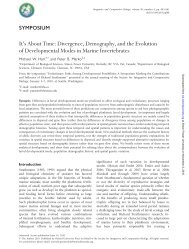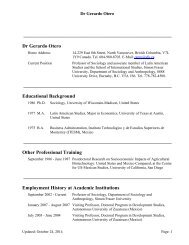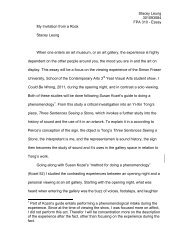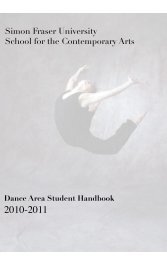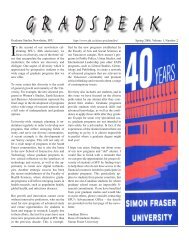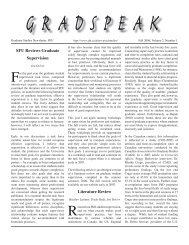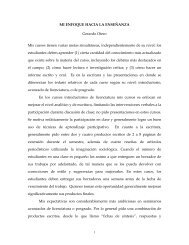WHO ARE THE PEASANTS? David Barkin - Project MUSE
WHO ARE THE PEASANTS? David Barkin - Project MUSE
WHO ARE THE PEASANTS? David Barkin - Project MUSE
You also want an ePaper? Increase the reach of your titles
YUMPU automatically turns print PDFs into web optimized ePapers that Google loves.
REVIEW ESSAYS 271ECUADOR, 1900-1995. By Steve Striffler. (Durham, NC: Duke UniversityPress, 2002. Pp. 242. $64.95 cloth, $19.95 paper.)CURRENT LAND POLICY IN LATIN AMERICA. Edited by AnnaliesZoomers and Gemma van der Haar. (Amsterdam: KIT Royal TropicalInstitute, 2000. Pp. 333. $ 25.00 paper.)This collection of books offers a variegated view of the extraordinarywealth of literature that continues to pour out of academe focusingon the peasant and peasantry in present-day Latin America. In thissense it gives meaning to the 1970s debate between campesinistas anddescampesinistas in Mexico: in spite of erudite affirmations of their disappearance,peasants are still a significant segment of the population,and today they are playing an important role in shaping the future oftheir societies and the processes of integration into the globalizedeconomy.Several different types of books are included in this collection. Thereare three doctoral dissertations transformed into books by Aldo Lauria-Santiago, Deborah Sick, and Steve Striffler; there are six edited collectionsof conference proceedings by Deborah Bryceson, Cristóbal Kay,and Jos Mooij; Jacquelyn Chase; Ruerd Ruben and Johan Bastiaensen;Annalies Zoomers and Gemma van der Haar; Noerma Giarracca; andEdelmira Pérez and Maria Adelaida Farah; and finally, there are twomonographs that offer uniquely personal interpretations of rural developmentin the region by Gerardo Otero and Robert Ross. Taken as awhole they attest to the vitality of social movements in rural LatinAmerica. They also criticize the mistaken view of many policymakersthat simply because the value of rural production is a falling proportionof national income, the sizable segments of the population thatwere chosen to remain there should be condemned to oblivion.The two monographs offer starkly contrasting, but optimistic, viewsof rural development in the region. Ross’s celebratory recounting of histwenty-six years of tenure as president of the Latin AmericanAgribusiness Development Corporation (LAAD) is an unusual additionto the literature. LAAD “operates as a private, for-profit company;the developmental mission of the company remains paramount whenselecting projects and clients” (5). He offers innumerable studies of investmentprojects that stimulated the commercial production of agriculturalproduce in the region. He recounts the frustrating negotiationswith uncomprehending central bankers and the difficulties of developingmarketing and other infrastructural networks that are so importantfor assuring the success of any business, and is pleased with what heidentifies as the two most significant changes that profoundly affectedagriculture: the decline in the role of the state in Latin America and inprotectionism in the industrialized world. Although lamenting the lack



